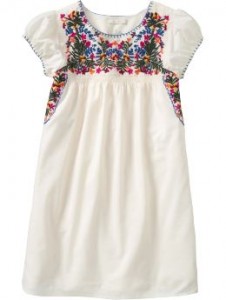(This fanagram is also available as podcast. Click on podcast in the category menu at the right.)
I first ran into the pronoun “ze” (pronounced zee) at Frances’ graduation from Grinnell College. In the written material, the third person singular pronoun was always a composite slashed affair of he/she/ze, and similarly the possessive pronoun was him/her/hir. (Hir is pronounced “here.”) I was thrilled to assume that at long last, the English language finally had a “gender neutral” pronoun. Seems like a trivial request, but it is a major annoyance in written language that often requires awkward jerry rigging. Consider the following sentence:
My daughter finds out who her soccer coach is tomorrow; I hope he? she? gives all players equal playing time.
The usual practice is to use “he” as a default when the sex is unknown, but those uncomfortable with male primacy might arbitrarily assign a female coach, others might alternative between he and she throughout a document. But beware of slipping into stereotypes when assigning gender – no longer can you cavalierly state, “The nurse was late for her shift. While not suitable for conversation, some use the awkward his/her, others might suddenly slip in a plural, which is wonderfully gender neutral:
“My daughter finds out who her soccer coach is tomorrow; I hope they give all players equal playing time.”
This singular “they” is widely accepted in spoken language, but here’s the kicker, Wikipedia states that “it is important to note that this is not recognized by the SAT and other standardized tests.” Now for those of you who think I am being very niggly, apparently people have been harrumphing about the lack of a gender neutral pronoun for at least 200 years, and our language is scattered with prior failed attempts. Ze and hir are the latest effort.
My initial enthusiasm for ze was quickly dashed. Frances informed me that ze was, in fact, not gender neutral, but actually symbolizes a rebellion against the “gender binary,” i.e. the assumption that a person is either categorically male or female, when in fact sexuality should be viewed as a spectrum ranging from male at one end to female at the other, with all sorts of wildly wonderful “ze” in between. Therefore, I should not use the ze/hir combo to describe any individual unless I know for a fact that the person does not self-identify as either male or female. Hmm… seems like ze would rarely be used conversationally, be mostly used by someone trying to politically perfect and inclusive by using the cumbersome triad of he/she/ze or his/her/hir. On the Grinnell website, these triads are extensively used to describe the college’s policy on sexual misconduct. A variety of case studies are presented, but many use gender neutral names for the fictitious preps and vics, like Pat, Terry, Chris, Alex, so it is difficult to piece together the exact nature of the misconduct, but perhaps that is the point. It just doesn’t matter.
It is interesting to consider how other languages deal with gender. While the English “they” is gender neutral, the French third person plural is gender specific, i.e. “ils” for men, “elles” for women, with ils as the stand-in if the gender is not specified. In Spanish, no pronoun is needed, it is part of the verb – “tiene dos tacos,” could describe either a man or a woman with two tacos. The possessive pronouns get weird in Spanish and French, because it is the objects that are either masculine and feminine, and the “gender” of the possessive pronoun attaches to the object and not the owner of the object. For example, maison (i.e. house) is a feminine word thus “sa” maison – does not distinguish whether a woman or a man owns the house. While this would seem to be “gender neutral,” those in the sexual continuum camp point out that there only two choices, so you are really still dealing with the same offensive gender binary. There are a few languages that have a neuter gender, but that term is sexually charged as well. It would be less offensive if it was called neutral instead of neuter. Personally, I never understood why objects are arbitrarily assigned a gender.
Zheesh, it’s getting difficult to be politically correct. Lets face it, I am now in the “older” generation, and it is my role to respond to the challenges of the younger generation. This made me think of how my parents responded to the “sexual revolution” of the 1960s. Mostly it was with a blind eye – siblings brought girlfriends and boyfriends home and were assigned rooms, but my mother would said, “I’m not stupid, I can hear the traffic at night.” I had an abbreviated skirt and braless thing going on, which made my parents quietly wince until one high school summer. I was working in a secretarial job and came down to  breakfast wearing a white Mexican wedding dress type of thing, the height of fashion at the time. It was very short and somewhat see-through and it was probably a bit rumpled. No bra. As I got up to leave, my father just couldn’t take it anymore. He erupted, “Did you forget to get dressed or are you wearing a night gown to work?” But the sexual revolution in our household was purely heterosexual, and pretty tame at that. I think my parents were probably grateful that their daughter was not spotted at Woodstock with a flower painted on her cheek, topless and joyfully dancing.
breakfast wearing a white Mexican wedding dress type of thing, the height of fashion at the time. It was very short and somewhat see-through and it was probably a bit rumpled. No bra. As I got up to leave, my father just couldn’t take it anymore. He erupted, “Did you forget to get dressed or are you wearing a night gown to work?” But the sexual revolution in our household was purely heterosexual, and pretty tame at that. I think my parents were probably grateful that their daughter was not spotted at Woodstock with a flower painted on her cheek, topless and joyfully dancing.
I started by thinking that I had stumbled on a solution to an annoying grammatical problem, but now I was in a whole different conversation. My daughter tells me there are three different aspects to overall sexuality. First of all there is one’s sex based on anatomy – i.e. the external genitalia – you are either male or female. Sounds simple, but surgery has shaken this anatomic distinction. Even basing sex on your chromosomes can get dicey if the chromosomes misfire and there is some embryonic hormonal snafu. “Ambiguous external genitalia” may result, leaving parents in a major quandary. There was even a creepy Law & Order SVU episode about this, an episode that made me realize that after an 8 year run, the SVU writers had exhausted the standard dysfunctions and were really digging deep to come up with a fresh story line.
The next level of identity is your gender identity, referring to society’s arbitrary rules regarding clothing and behavior, and other outward manifestations, i.e. think pink vs. blue, ballet vs. football, Barbie vs. GI Joe, etc. etc. Finally there is your sexual identity – i.e. who you want to have sex with. And of course there are labels for this – straight, bisexual, lesbian/gay, etc. Now society has traditionally defined “normal” as the alignment of all three aspects – you’ve got your genitalia lined up with your clothing and behavior, and you are sexually attracted to the opposite sex. However, these six different variables can be combined in multiple different ways and we just don’t have the vocabulary to collectively express all the variations, until ze, that is.
Okay, let’s see if we can use a case example to grok the ze. Leslie Feinberg is a political activist, an author, and refers to hirself as ze. In hir biography it states that ze was assigned female at birth but now considers hirself a “transgender lesbian.” Now the word “assigned” seems a bit judgmental to me, and I think that I will give Leslie’s parents a break, who understandably did not question the obstetrician’s happy announcement, “Congratulations, it’s a girl!” The basic premise is that if it walks like a duck and quacks like a duck, then it is probably a duck. The disconnect may have emerged when hir parents and society assigned hir a female gender identity. Maybe hir parents pushed a bit too hard on the feminine accessories, and resisted all of Leslie’s attempts to be at the very least a  “tomboy.” Ze eventually rejected hir gender assignment and self-identified as “transgender,” adopting the external trappings of a man – i.e. shaved head, suit, etc. So far so good, but I was stumped on the apparent contradiction in the combo of transgender and lesbian, which apparently refers to hir female partner Minnie Bruce Pratt.
“tomboy.” Ze eventually rejected hir gender assignment and self-identified as “transgender,” adopting the external trappings of a man – i.e. shaved head, suit, etc. So far so good, but I was stumped on the apparent contradiction in the combo of transgender and lesbian, which apparently refers to hir female partner Minnie Bruce Pratt.
Maybe this type of thing is addressed in any introductory Gender and Women’s Studies course, but to my poorly educated mind, I would think that sexual identity should trump both gender and sex, and if Leslie self identifies as male, then ze is a man, and a relationship with a woman would be heterosexual. But maybe underlying sex cannot be changed, or maybe this is whole point of ze, i.e. you can mix and match however you want, perhaps throw in a little surgery if desired, and what you’ve got is a group of very interesting people looking for recognition and respect.
However, I could be totally wrong. As Wikipedia says, “this article may require clean up to meet Wikipedia’s quality standards.” But this is just me, a 60 year old trying to muddle through and self educate so that I am not totally clueless in this sexual revolution. Maybe I can’t pinpoint Leslie’s exact spot on the continuum, but “ze” has helped me appreciate its existence and that might be good enough.
The missing words in the following poem are all anagrams (i.e. share the same letters like spot, post, stop) and the number of asterisks indicate the number of letters. Your challenge is to solve the missing words based on the above rules and the context of the poem. Scroll down for answers.
A female assignment at birth is hard to undo,
When you’re sent to ballet class ****** in a frilly tutu
There are bows in your hair and pink is a color you loathe
And parents ****** you to play with Barbie, but you prefer GI Joes.
Transgenders said “Enough!” and into the binary party they ******
And introduced “Ze” so that the continuum could be formally enlarged.
*
*
*
*
*
*
*garbed, badger, barged
Follow Liza Blue on:
Share:
